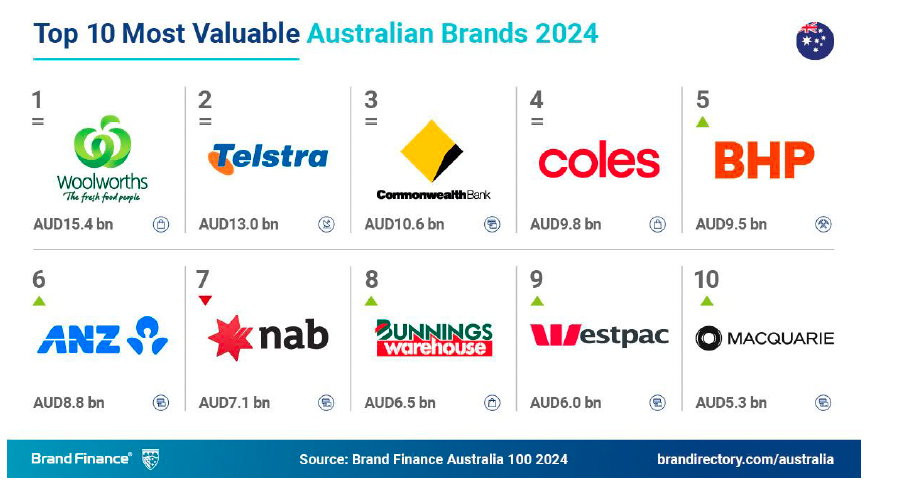What Australian Marketing Institute judges are looking for in the Lisa Ronson Next Generation Marketing Leader Award

What you need to know:
- The Australian Marketing Institute has created a new individual category in this year’s Excellence Awards in honour of the late Lisa Ronson and her mentorship and contribution to the marketing profession: The Lisa Ronson next Generation Marketing Leader Award.
- The judges – Keystart’s Liam Loan-Lack, OnePoint’s Kerim El Gabaili, High Net Agency and Private Jet Media’s Melanie Lindquist and Katherine Halliday – have revealed demonstrable evidence of using all the tools at the modern marketer’s disposal to deliver creative and commercial impact is critical to how they’ll be judging this year’s entrants.
- Professional development prioritisation, learning and curiosity are also key attributes on the scoresheet for these three experienced marketing professionals. Lindquist: “A broad understanding of marketing and consistent learning mentality is important for the next generation marketing leader.”
- It’s not just the data and measurements these emerging marketing leaders needs to show, says LoanLack. “In today’s environment, anyone can justify decisions with the swell of data available, but the real test is whether you can craft a compelling narrative that inspires action.”
- El Gambaili meanwhile, says emerging leaders must see themselves as future CEOs, not just CMOs “because they’re the ones closest to market dynamics, consumer behaviour, and business growth opportunities. I’ll be looking for entrants who lead with courage, think commercially, and put the customer at the centre of their strategic decisions, especially those who influence internal product or service innovation to create differentiated value.”
Inspiring action
Keystart chief customer officer and judge, Liam Loan-Lack, would love to see entrants demonstrating emerging leadership attributes not just through the work they deliver, but in how they sell their story, “bringing simplicity and panache to their narrative”.
“In today’s environment, anyone can justify decisions with the swell of data available, but the real test is whether you can craft a compelling narrative that inspires action,” he comments. “To that end, the award-winning emerging leaders will have a strong point of view on what the future of marketing means for their business; and in particular have translated the buzz in the market around ‘what good marketing looks like’ into a simple, tailored solution for their business needs.”
Tangible examples where the entire business has been brought on a journey will be critical here. “I learnt early on in my career that at least 50 per cent of the perceived ‘effectiveness’ of marketing was the internal marketing efforts,” Loan-Lack says. “I will be examining whether the entries show that they lead with influence and negotiation to create buy-in. And that doesn’t necessarily mean a leader has changed things up – that is, via a re-brand, repositioning, revitalisation – perhaps the most effective course was for instance, to be consistent with current creative and media approach. Instead, it is about how leaders have quantified how marketing initiatives deliver value cross functionally to enhance the entire customer experience and ultimately drive a competitive advantage.”
For OnePoint Group managing director, Kerim El Gabaili, an ongoing challenge the marketing profession faces is this need to reposition itself inside many organisations as driving strategy, informing innovation, and influencing every part of the customer experience.
“Emerging leaders must see themselves as future CEOs, not just CMOs because they’re the ones closest to market dynamics, consumer behaviour, and business growth opportunities,” he says. “I’ll be looking for entrants who lead with courage, think commercially, and put the customer at the centre of their strategic decisions, especially those who influence internal product or service innovation to create differentiated value.”
To this end, El Gabaili wants to see candidates who take ownership beyond their functional role, initiate change, influence cross-functional thinking, and innovate around customer needs. “True potential shows when a marketer sees gaps and steps up to fill them before being asked and demonstrates leadership,” he says.
Managing partner of High Net Agency and COO of APAC for Private Jet Media, Melanie Lindquist, is equally after demonstrable evidence of emerging leadership qualities. “This can take shape in many forms, from leading an initiative, creating a new approach to a marketing challenge or leading stakeholder collaboration to exceed performance metrics,” she says.
Consulting marketer, Katherine Halliday, notes Lisa Ronson is celebrated for fusing bold creativity with sharp commercial acumen, whether it was putting Aussie humour centre-stage at Tourism Australia or driving Coles’ customer-first data transformation. “But perhaps her greatest legacy is the way she championed and mentored the next generation of marketers, insisting that brave ideas must still deliver measurable value. In that spirit, I’ll be looking for entrants who can mirror Lisa’s trademark blend of imagination and rigour: spotting an untapped opportunity, galvanising teams around a clear purpose, and proving impact through tangible business or societal results,” she says. “That alchemy of vision, courage and accountability is the clearest signal of a future marketing leader.”
Many new marketing leaders are expected to make a rapid impact, often without the benefit of a fully built team, robust data infrastructure, or adequate budget. This pressure to show quick wins can stifle creative risk-taking and long-term vision, as leaders are forced to prioritise short-term execution over strategic innovation. The constant need to prove value quickly discourages experimentation and can lead to a culture where creativity feels optional or even risky, rather than essential.
Courage, conviction, clarity, customer
Behind all this, judges point to a number of key attributes they’re looking for in entrants. “I’m looking for courage, conviction, strategic clarity, and a deep understanding of the customer. I want to see marketers who push inwards, into operations, product, and service design, to influence the full value chain,” says El Gabaili.
Loan-Lack points to curiosity and proactivity as must-haves. “Having said that, due to this, more than ever marketers need to grasp the fundamentals of strategy in order to decide with a level of conviction across the huge number of channels and creative options,” he says.
“Emerging leaders need to have prioritised their own professional development to be truly objective on the application of such tactics. In other words: An absence of evangelism is critical to demonstrate that emerging leaders have the strategic nous required, especially when we consider that such leaders will eventually be the overall budget owner of significant sums. Objectivity is key to ensure such budgets have the maximum economic impact.”
Lindquist cites a combination of diversity of skills and experience but more importantly, a strong desire to learn.
“A passion for learning is critical to keeping at the forefront of marketing excellence. This could range from formal education, skills training, working with mentors; to conference participation and contributing to initiatives in the workplace. A broad understanding of marketing and consistent learning mentality is important for the next generation marketing leader,” she says.
A passion for learning is critical to keeping at the forefront of marketing excellence. This could range from formal education, skills training, working with mentors; to conference participation and contributing to initiatives in the workplace. A broad understanding of marketing and consistent learning mentality is important for the next generation marketing leader.
Pros and cons of modern marketing
What’s giving emerging marketing leaders more opportunity to build their creative, leadership and strategic nous is the shift from linear funnels to dynamic, omnichannel ecosystem, continues El Gabaili.
“With access to real-time data, marketing automation, and customer journey visibility, they’re better positioned than ever to lead with insight, iterate quickly, and influence the full business, not just campaigns,” he says. “This environment rewards those who combine creativity with systems thinking. It’s no longer just about storytelling, it’s about shaping the customer’s entire brand experience, from first click to post-sale loyalty. That’s a strategic playing field, and a launchpad for leadership.”
In addition, modern marketers have a heightened awareness of attribution. “Clear definition of marketing metrics allows emerging marketing leaders more opportunity to contribute. Metrics will help the business understand that by involving marketing at all levels will positively impact results whether it is via creative, leadership or strategic nous,” comments Lindquist.
“Where previous generations needed deep pockets and long lead times, emerging leaders can now validate concepts in days, iterate live in market and build board-ready business cases grounded in fresh customer signals. This acceleration gives them unprecedented scope to hone both creative courage and strategic nous,” adds Halliday.
“The flip side of an always-on, data-rich environment is the risk of being trapped in perpetual execution mode, leaving little space for reflection or long-range planning. Guarding time for strategic thinking is harder – but more critical – than ever. My advice is to schedule regular pauses for learning and reflection, whether development programs or self-directed monthly ‘thinking sprints’, to ensure tactical busyness doesn’t crowd out strategic clarity.“
Loan-Lack agrees to overwhelming pressure to deliver immediate results while managing limited resources and high expectations. “Many new marketing leaders are expected to make a rapid impact, often without the benefit of a fully built team, robust data infrastructure, or adequate budget. This pressure to show quick wins can stifle creative risk-taking and long-term vision, as leaders are forced to prioritise short-term execution over strategic innovation,” he says.
“The constant need to prove value quickly discourages experimentation and can lead to a culture where creativity feels optional or even risky, rather than essential.”
In complement, El Gabaili agrees what makes it tougher for emerging marketers to get ahead is the noise. “There’s pressure to jump on every trend, every tool, every piece of data, often at the expense of long-term thinking. It’s tough to develop deep strategic skill or leadership confidence when you’re constantly reacting,” he says. “There’s also a fear of failure that stifles innovation internally. That’s why I value marketers who show courage in prioritising and saying no.”
The customer isn’t a segment on a spreadsheet; they’re the centre of the strategy. Every commercial decision should work backwards from their unmet needs. When you approach strategy through that lens, effectiveness becomes easier to measure, differentiation becomes clearer, and growth becomes more sustainable.
Lesson judges wished they had learned earlier
Which is why Loan-Lack wishes he’s learned the difference between effectiveness and efficiency earlier in his career.
“It is very easy to fall into the trap of optimising for efficiency metrics like ROAS/ROI, and indeed many non-marketing stakeholders believe this is how one should judge the effectiveness of marketing,” he admits. “With this in mind, I’d recommend educating stakeholders on the concept of incrementality and how the ultimate marker of marketing effectiveness are initiatives that drive outcomes that otherwise would not occur/at a faster rate than the natural, organic growth rate has delivered, rather than outcomes that are easiest to measure. I think one of the common issues we face now as an industry is initiatives that claim credit for conversions that would occur anyway. Award-worthy winners will be able to navigate this tension.”
Saying an informed 'no' to distractions focuses resources on the initiatives that truly advance the core objective. That discipline not only drives effectiveness,but also spares teams the fatigue of fragmented effort.
For Halliday, it’s recognising breadth doesn’t always equal opportunity. “Saying an informed ‘no’ to distractions focuses resources on the initiatives that truly advance the core objective. That discipline not only drives effectiveness,but also spares teams the fatigue of fragmented effort,” she says.
Measuring everything is the principle Lindquist wishes she’d understood better earlier in her career.
“Marketing was always positioned as a cost centre and its impact was not clearly understood as it was indirectly attributing to performance. This was always a challenge when getting a voice early in the decision-making process,” she says. “Marketing strategy and effectiveness has developed significantly since then with attribution across the full funnel. However, education and development of marketing attribution modelling will continue to be a career-long pursuit.”
El Gabaili’s lesson is that marketing doesn’t live in one department; it’s embedded across the entire business. “I used to think strategy was about campaigns. But the real impact comes when you align marketing with operations, sales, service, and product development,” he says.
“The other lesson is this: The customer isn’t a segment on a spreadsheet; they’re the centre of the strategy. Every commercial decision should work backwards from their unmet needs. When you approach strategy through that lens, effectiveness becomes easier to measure, differentiation becomes clearer, and growth becomes more sustainable.”





